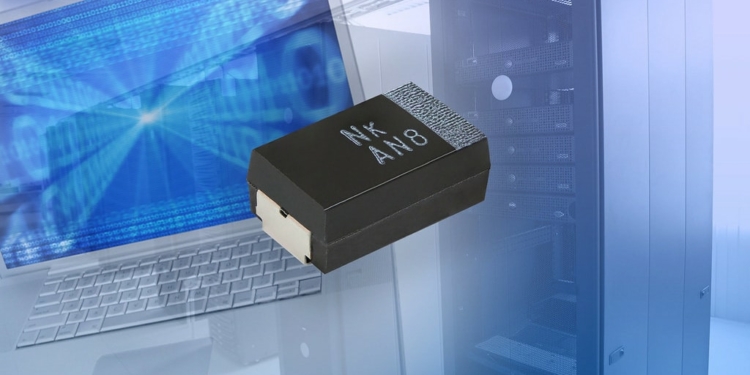Source: Vishay news
MALVERN, Pa. — June 5, 2019 — Vishay Intertechnology, Inc. (NYSE: VSH) today announced that the company has extended its T55 series of vPolyTan™ surface-mount polymer tantalum molded chip capacitors with new devices in the D case (EIA 7343-31) size featuring single-digit ESR values from 9 mΩ down to 7 mΩ, with values to 6 mΩ in development.
Previously reserved for larger case sizes, the single-digit ESR values of the capacitors released today are 3 mΩ to 5 mΩ lower than those typically found in D case devices. The result is reduced voltage drops, better frequency response, and higher ripple current ratings up to 5.67 A IRMS, which reduces the number of capacitors required on the PCB. In addition to saving board space, the D case’s low 3.1 mm profile enables the design of thinner end products.
Offered in the compact J, P, A, B, T (low-profile B — 1.2 mm max), D, V, and Z case sizes, the T55 series features a wide capacitance range from 3.3 µF to 1000 µF over voltage ratings from 2.5 V to 63 V, and a capacitance tolerance of ± 20 %. The devices are optimized for power management, battery decoupling, and energy storage in computers, servers, network infrastructure equipment, solid state drives, and wireless transceivers.
Operating over a temperature range of -55 °C to +105 °C, the capacitors provide low internal resistance for enhanced charge and discharge characteristics. Featuring lead (Pb)-free terminations, the T55 series is RoHS-compliant, halogen-free, and Vishay Green. The devices are compatible with high volume automatic pick and place equipment and offer a Moisture Sensitivity Level (MSL) of 3.
Samples and production quantities of the new single-digit ESR capacitors are available now, with lead times of 14 to 16 weeks.






























